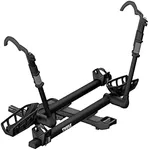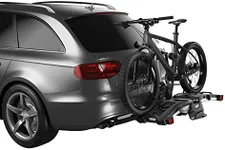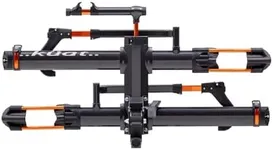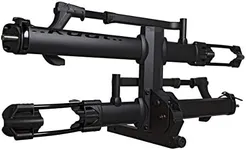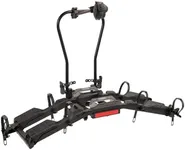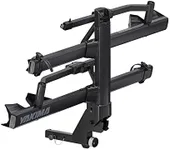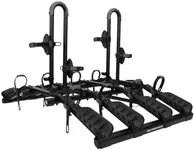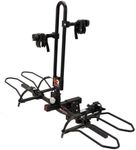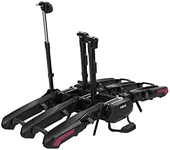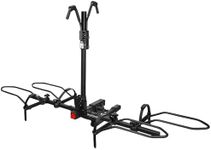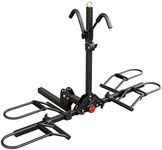Buying Guide for the Best Electric Bike Rack
Choosing the right electric bike rack is important to ensure your e-bike is transported safely and conveniently. Electric bikes are heavier and often have different frame shapes compared to regular bikes, so not every bike rack will be suitable. When shopping for an electric bike rack, you should focus on features that support the extra weight and size, as well as ease of use and compatibility with your vehicle. Understanding the key specifications will help you find a rack that fits your needs and keeps your bike secure during travel.Weight CapacityWeight capacity refers to the maximum amount of weight the rack can safely hold. This is especially important for electric bikes, which are typically much heavier than standard bikes. Racks usually list their weight limit per bike and for the total rack. Lighter racks may support up to 35-40 lbs per bike, while heavy-duty racks can handle 60 lbs or more per bike. To choose the right one, check your e-bike’s weight (including the battery if you plan to transport it attached) and make sure the rack can handle it. If you have multiple e-bikes, add up their weights and ensure the rack’s total capacity is sufficient.
Mounting StyleMounting style describes how the rack attaches to your vehicle. The most common types are hitch-mounted, trunk-mounted, and roof-mounted. Hitch-mounted racks are generally the best for electric bikes because they can support more weight and are easier to load. Trunk and roof racks often have lower weight limits and can be harder to use with heavy bikes. If your vehicle has a hitch receiver, a hitch-mounted rack is usually the safest and most convenient choice for e-bikes.
Bike Attachment MethodThis spec explains how the rack holds your bike in place. Some racks secure bikes by the frame, while others use wheel trays or clamps. For e-bikes with unique frame shapes or sensitive components, wheel-holding racks are often better because they avoid putting pressure on the frame. If your e-bike has a step-through or non-traditional frame, look for racks that can accommodate these designs. Consider how easy it is to load and unload your bike, especially if it’s heavy.
Rack WeightRack weight is how much the rack itself weighs. Heavier racks are often sturdier and can support more weight, but they can be difficult to install, remove, or store. Lighter racks are easier to handle but may have lower weight limits. If you plan to take the rack on and off your vehicle frequently, consider how much weight you’re comfortable lifting.
Number of Bikes SupportedThis tells you how many bikes the rack can carry at once. Some racks are designed for a single bike, while others can hold two or more. If you only have one e-bike, a single-bike rack may be lighter and easier to use. If you plan to transport multiple bikes, make sure the rack can handle the combined weight and that there’s enough space between bikes to avoid damage.
Security FeaturesSecurity features include locks for the bikes and the rack itself. Some racks come with integrated locks, while others require you to buy them separately. Locks help prevent theft when your bikes are left unattended. If you often park in public places, look for racks with built-in locking systems for both the bikes and the rack’s attachment to your vehicle.
Ramp or Loading AidA ramp or loading aid makes it easier to get heavy e-bikes onto the rack. Some racks include a ramp, while others offer it as an accessory. If lifting your e-bike is difficult, a ramp can be a valuable feature. Consider your physical ability and whether you’ll often be loading the bike by yourself.
